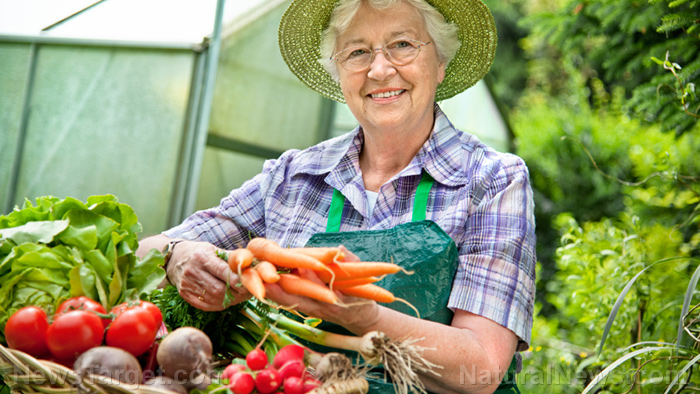
Advertisement
Gardening is equal parts exciting and fun – but that doesn’t mean you should dive headfirst without a little bit of knowledge. You can always have a garden chock-full of different fruits and vegetables, but it takes proper planning to figure out WHERE you need to place these crops to ensure that they’ll grow healthy and strong. This is because some plants and vegetables just aren’t compatible with each other, meaning they shouldn’t be planted together.
Plant incompatibility basics
Sometimes, plants with different heights don’t grow well together, like tomatoes and other smaller plants.
Some plants require different levels of moisture, while others are more susceptible to diseases. Keeping these disease-prone crops away from other plants can help restrict possible infections to a small patch of land.
There are plants that chemically damage other plants or even prevent their growth. These allelopathic plants leave behind chemicals that harm or kill other crops.
Most of the plants mentioned in this article are allelopathic, so pay attention and don’t plant them together. Allelopathic plants can make planning your garden more difficult, but doing your research can prevent crop failures.
Below are 18 flowers, fruits and vegetables that don’t grow well when planted together.
- Sunflowers. Sunflowers emit a chemical from their roots that prevents nearby plants from growing. This chemical will affect an area of about 12 inches around the plants, so keep other crops away. Take note that sunflower seed shells also contain toxic chemicals that will kill grass and other plants. Always harvest the seed heads before the seeds start to fall. Since sunflowers grow tall, they may shade out other sun-loving plants.
- Carrots. Carrots won’t grow well if you plant them near dill. Additionally, carrots don’t like to share space with parsnips.
- Beans and peas. Beans and peas both have negative effects on certain plants, especially all kinds of sweet and hot peppers. Beets are also affected by all kinds of pole beans.
- Onions and the allium family. Alliums like onions, garlic, leeks, and shallots will stunt the growth of beans and peas.
- Beets. Beets won’t grow well near mustard plants or members of the bean or pea family.
- Lettuce. It’s easy to cultivate lettuce, as long as you plant them away from beans, beets and parsley.
- Brussels sprouts. This cruciferous vegetable doesn’t grow well next to strawberries or tomatoes.
- Cabbage. Planting cabbage and cauliflower together makes them susceptible to Plasmodiophora brassicae (clubroot). Clubroot makes the plant’s roots swell and unable to take up water, which then kills the plant. Radish and tomato also don’t grow well near cabbage and cauliflower.
- Celery. Celery can be a bit difficult to grow under normal circumstances. To ensure optimal growth, keep celery away from parsnips or potatoes.
- Marigolds. Marigolds are often included in vegetable gardens because they keep away many pests. However, these brightly colored flowers can stunt the growth of peas and pole beans.
- Corn. Separate corn and tomatoes because both are vulnerable to a common fungal infection. If tomatoes are infected, they will infect the corn if both plants were planted too close together. Corn and tomatoes are susceptible to cotton bollworm (also called corn earworm and tomato fruit worm).
- Potatoes. Potatoes aren’t compatible with many plants. To remedy this, grow potatoes in a far corner of your garden. Even though potatoes and tomatoes belong to the same family, they don’t grow well when planted together. Potatoes slow the growth of tomatoes and the former becomes more susceptible to Phytophthora (potato blight) when the plants are together. When rotating crops, don’t plant potatoes or tomatoes where the other grew the previous year. Plant potatoes away from cucumbers, melons, squash, sunflowers, tomatoes and turnips.
- Cucumbers. Novice gardeners find it easy to grow cucumbers, but note that these vegetables don’t like being planted near cauliflower, potatoes, or tomatoes, or any strong aromatic herbs like basil, cilantro, lavender, rosemary and thyme.
- Kohlrabi. Kohlrabi, a cruciferous vegetable in the cabbage family, doesn’t grow well when planted near pole beans, strawberries or tomatoes.
- Broccoli and cauliflower. Both broccoli and cauliflower won’t grow well near peppers, strawberries, tomatoes and squash of all types.
- Melons. Melons are susceptible to fungi caught from squashes. They should also be kept away from cucumbers and potatoes.
- Asparagus. Asparagus requires some space, so don’t let other plants grow too close. It is particularly susceptible to poor growth when planted next to garlic, onions and potatoes.
- Tomatoes. Tomatoes won’t grow well when planted near cilantro and cucumbers.
Starting a home garden can be quite easy – if you know how to prepare for it. Decide on what plants you’re willing to grow and make a proper layout plan to make the most out of your garden.
Sources:
Advertisements







